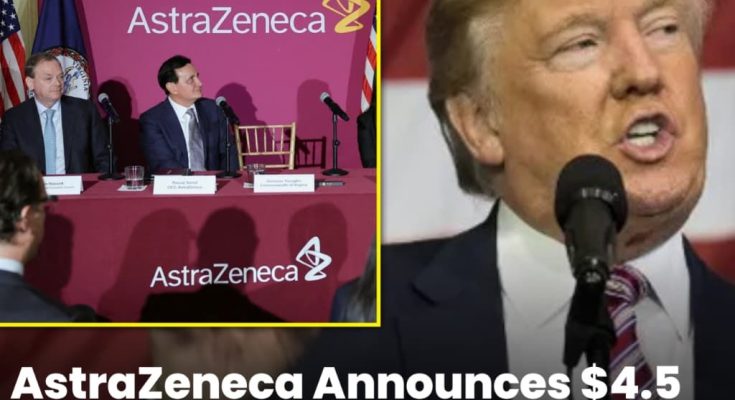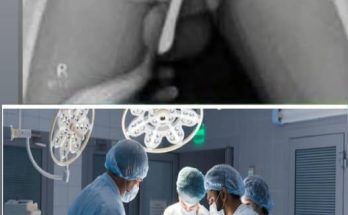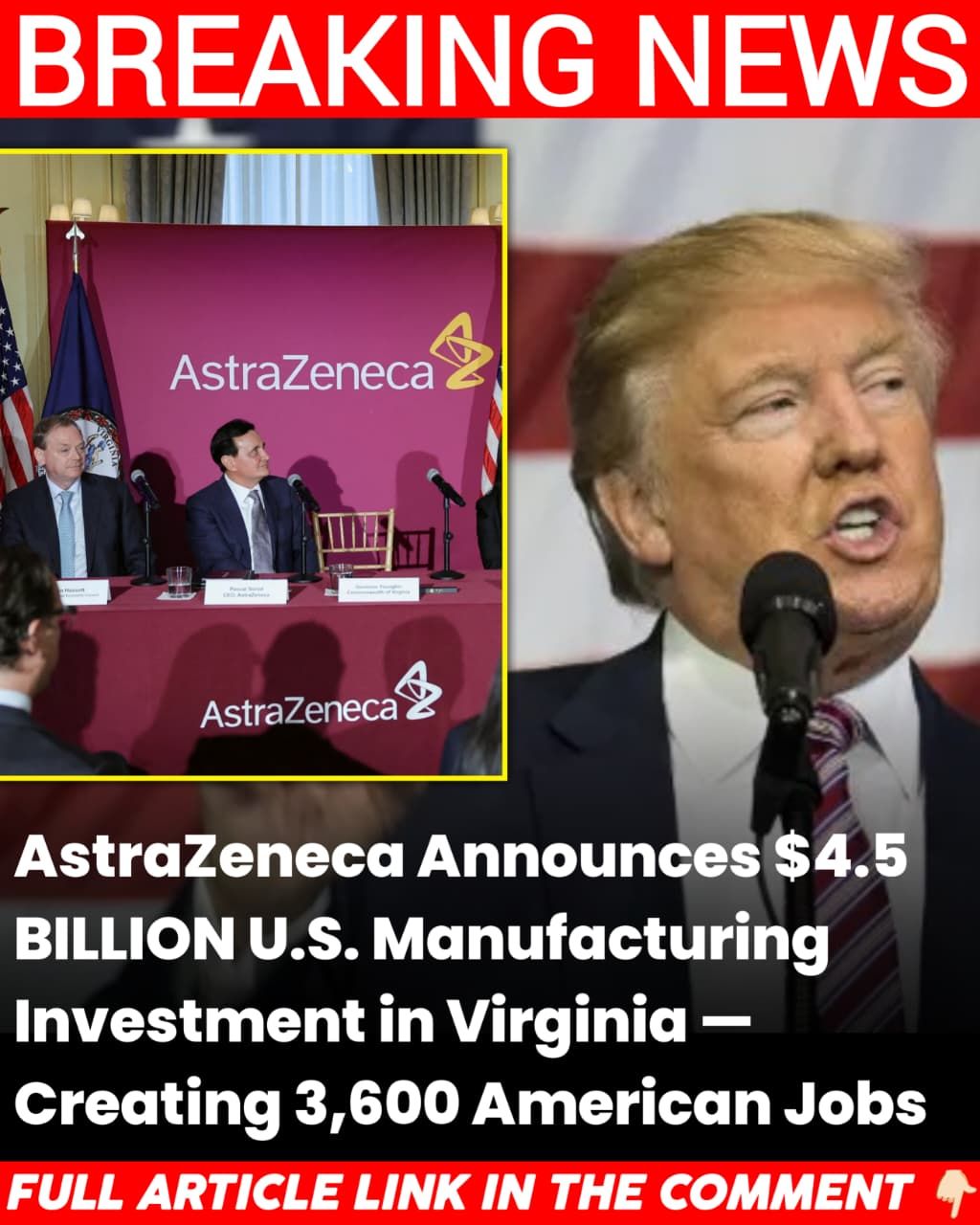
In a massive boost for American manufacturing, AstraZeneca has announced a $4.5 billion investment in two new facilities in Virginia, marking one of the largest pharmaceutical construction projects in U.S. history. The move, confirmed on October 9, 2025, will create more than 600 permanent, high-paying jobs and an estimated 3,000 construction and indirect roles, underscoring the company’s commitment to expanding its U.S. footprint and strengthening domestic production.
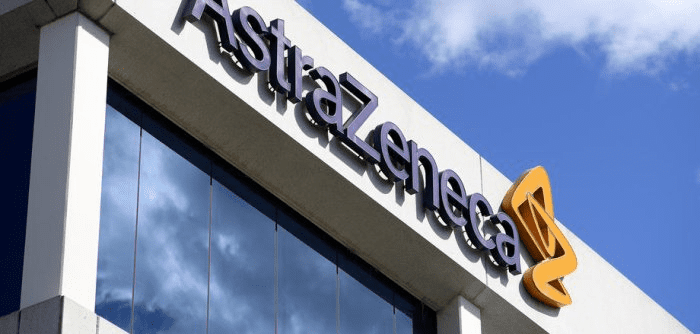
The new facilities will be built in Albemarle County, Virginia, and will specialize in developing and producing next-generation therapies for chronic diseases and advanced cancer treatments. AstraZeneca executives say the project represents the first phase of a broader $50 billion U.S. expansion plan scheduled to run through 2030. The company will establish two major manufacturing centers — one dedicated to antibody-drug conjugates for cancer medicine, and another for large-scale drug substance manufacturing that supports its global supply chain.
Virginia Governor Glenn Youngkin hailed the decision as a defining moment for the state’s economic future, calling it a “transformational project that cements Virginia as a global hub for advanced pharmaceutical manufacturing.” He credited the swift collaboration between AstraZeneca and state economic teams for finalizing the deal in just over a month, noting that the new facilities will “bring thousands of jobs and billions in growth to communities across central Virginia.” Local officials have also praised the company’s decision to locate near Charlottesville, where the project is expected to anchor a new biotech corridor.
AstraZeneca’s move aligns with a broader reshoring trend among major pharmaceutical companies looking to strengthen U.S.-based production following recent supply chain disruptions. The company stated that the new plants will increase domestic production of high-value biologics, reduce reliance on overseas facilities, and ensure faster delivery of medicines to American patients. This initiative also complements federal incentives introduced in recent years to encourage domestic investment in critical health industries.
Industry analysts have linked AstraZeneca’s expansion to the favorable business climate created by tariff protections and pro-manufacturing policies under President Trump. While many economists once warned that tariffs could slow growth, U.S. manufacturing employment has surged since 2017, adding more than 400,000 jobs by the end of Trump’s first term according to Bureau of Labor Statistics data. AstraZeneca’s latest move adds momentum to that trend — another signal that the U.S. remains an attractive destination for global capital investment.
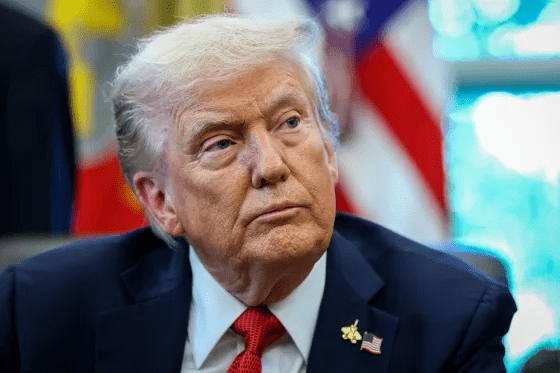
However, some experts caution that such large projects bring challenges alongside opportunity. AstraZeneca will need to navigate regulatory approvals, environmental compliance, and complex construction timelines to ensure the facilities are operational within the next four to five years. Workforce training will also be key — both for construction teams and for the highly specialized technicians who will staff the new plants once production begins.
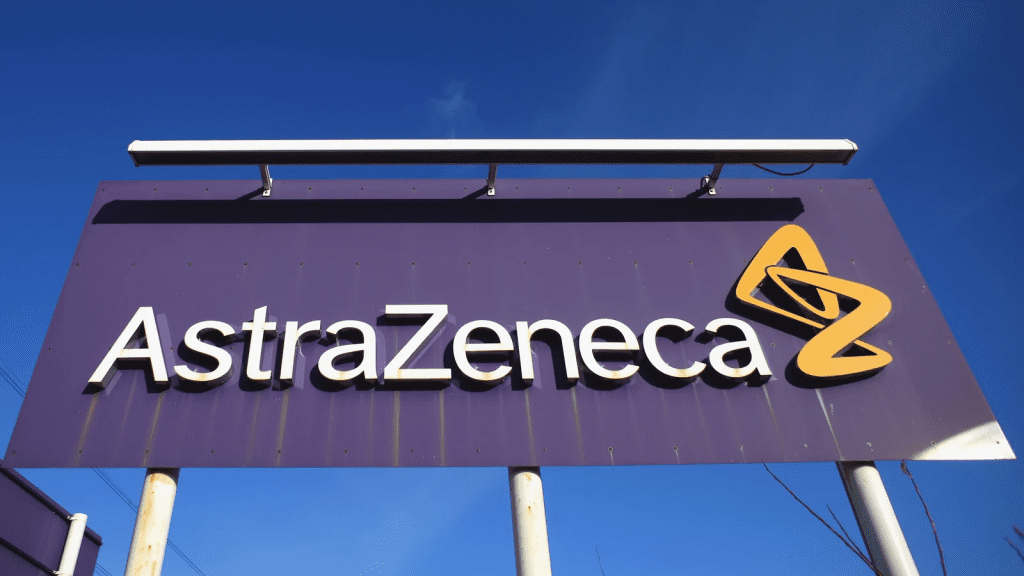
Despite the hurdles, the project’s economic promise is undeniable. Local business owners anticipate a surge in demand for housing, retail, and services in the surrounding region, while Virginia’s education institutions are already preparing partnerships to train biotech and pharmaceutical workers. The Virginia Economic Development Partnership, which coordinated the deal, projects that the long-term ripple effect of AstraZeneca’s investment could exceed $7 billion in state economic output over the next decade.
For AstraZeneca, this investment reinforces its long-term strategy of blending innovation with supply chain resilience. The company has emphasized that its commitment to U.S. expansion reflects both business confidence and a desire to contribute to America’s life sciences leadership.
The announcement also carries symbolic weight — a public demonstration that high-end manufacturing is not leaving the United States, but returning stronger than before. As global companies look to diversify operations and secure stable production environments, AstraZeneca’s $4.5 billion bet on Virginia sends a clear message: the future of medicine, innovation, and jobs may be built right here at home.
